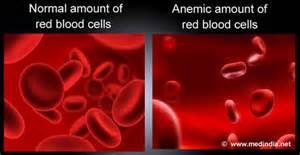Arthritis is a common disorder that affects your joints. It can cause pain and inflammation, making it difficult to move or stay active. There are many types of arthritis. Each form causes different symptoms and may need different treatments. While arthritis usually affects older adults, it can develop in men, women and children of any age.
Arthritis is a disease that affects your joints (areas where your bones meet and move). Arthritis usually involves inflammation or degeneration (breakdown) of your joints. These changes can cause pain when you use the joint.
Joints get cushioned and supported by soft tissues that prevent your bones from rubbing against each other. A connective tissue called articular cartilage plays a key role. It helps your joints move smoothly without friction or pain.
Some joints have a synovial membrane, a padded pocket of fluid that lubricates the joints. Many joints, such as your knees, get supported by tendons and ligaments. Tendons connect muscles to your bones, while ligaments connect bones to other bones.
Arthritis is most common in the following areas of the body:
- Feet.
- Hands.
- Hips.
- Knees.
- Lower back.
Types of arthritis:
- Osteoarthritis is the most common type of arthritis. It’s often related to aging or to an injury. It’s “wear and tear” arthritis, over years when the joint cartilage breaks down from repeated stress. The most common form.
- Autoimmune arthritis happens when your body’s immune system attacks healthy cells in your body by mistake.
- Rheumatoid arthritis, or RA, is an autoimmune and inflammatory disease, which means that your immune system attacks healthy cells in your body by mistake, causing inflammation (painful swelling) in the affected parts of the body.RA mainly attacks the joints, usually many joints at once. RA commonly affects joints in the hands, wrists, and knees. In a joint with RA, the lining of the joint becomes inflamed, causing damage to joint tissue. This tissue damage can cause long-lasting or chronic pain, unsteadiness (lack of balance), and deformity (misshapenness).
RA can also affect other tissues throughout the body and cause problems in organs such as the lungs, heart, and eyes.
- Ankylosing spondylitis, or arthritis of the spine (usually your lower back).
- Juvenile arthritis is a type of arthritis that happens in children. This is a disorder where the immune system attacks the tissue around joints. JA typically affects children 16 or younger.
- Infectious arthritis is an infection that has spread from another part of the body to the joint.
- Psoriatic arthritis affects people with psoriasis.
- Gout is a painful type of arthritis that happens when too much uric acid builds up in the body. It often starts in the big toe
What are the signs and symptoms of RA?
With RA, there are times when symptoms get worse, known as flares, and times when symptoms get better, known as remission.
Signs and symptoms of RA include:
- Pain or aching in more than one joint
- Stiffness in more than one joint
- Tenderness and swelling in more than one joint
- The same symptoms on both sides of the body (such as in both hands or both knees)
- Weight loss
- Fever
- Fatigue or tiredness
- Weakness


